What Makes a Great Picture Book?
And other questions I answered for SHELF, a new picture book magazine
I’m honored to be featured in the first issue of SHELF, a biannual print magazine celebrating picture books. Because it’s based in the UK and has already sold out (deservedly!), Helen Hancocks (my friend and co-creator of the magazine) agreed to allow me to share our interview. Helen is a fantastic picture book author-illustrator and bookshop owner. She’s smart and passionate and asked me such interesting questions. It was fun to be the interviewee for a change. We hope you enjoy it!
Helen: Moonbow is one of our favorite reads and has me thinking about picture books in a new light every time. How did Moonbow begin and why did you land on children's literature and picture books as your source of inspiration?
Taylor: Moonbow developed gradually and organically. You could argue that the seeds were planted in childhood. My family always had books around, especially beautifully designed books. However, it wasn’t until I had my children that I recognized the transformative power of picture books. When my daughter was born around 11 years ago, I was eager to buy gorgeously illustrated books to display in her nursery, but as I read them to her, I started to notice things. I saw how creative and experimental many of them were. And the more we read together, the more appreciative I became of the art form. Although, when I’d share my passionate insights with other adults, they often didn’t share the same level of enthusiasm. It wasn’t that they didn’t appreciate children’s books for children; they just didn’t understand why I, an adult, couldn’t stop talking about them. Fast-forward to 2022, we were emerging from a global pandemic. I had been homeschooling my two children and reading to them more than ever, and I had just closed my decade-old business. It seemed like an opportune time to take a risk and turn my enthusiasm into something tangible.
H: What makes a great picture book?
T: Ultimately, that’s for the child to decide, but I think a winning recipe includes propulsive, surprising page turns, a dynamic relationship between text and image, and a great read-aloud experience.
H: What do you look for when browsing or shopping for picture books?
T: You know that saying, "Don't judge a book by its cover”? Ignore that. You should definitely judge a book by its cover, especially a picture book. If the cover is bad, chances are the inside is too.
H: Is what you want from a picture book different from your kids' choices? And how do you navigate this and find common ground?
T: Not typically, and when it is, I know it’s my fault, not theirs. It usually happens when I have an adult agenda, like I know the writer, or love the illustrations, or connect with the message. That said, everyone has different tastes; we’re not all going to love the same books, which is a good thing. But when everyone in my family thinks a book is great, it probably is.
H: I love the depth you go into when discussing a picture book—with a full heart, lots of passion, and an open curiosity. With this in mind, how do you pick a starting point for Moonbow, or a theme?
T: I’m well aware that, despite my motives for starting Moonbow, there are a lot of adults who care deeply about children's books, and there always have been. What struck me was that most of them worked with children’s books in some capacity (creators, publishers, librarians, teachers), and there was a lot less writing coming from enthusiasts. Plus, I’m a big reader. I enjoy reading thoughtful literary criticism about books for grownups. But it was harder to find that writing style for children’s books. I guess it’s from my background as a creative director, but if I can’t find what I’m looking for, I make it myself.
When it comes to a starting point, I struggle, which is why I’m not a prolific publisher. I always have a handful of ideas floating around in my mind, but it’s not until a few of them synthesize that I know the idea is ready to put into words, and even then, it continues to change until the very end. I try to allow my curiosity to lead me into new territories, and honestly, sometimes it works, but often it doesn’t. For me, and I believe for most writers, I don’t really know what I think until I write about it. It’s all part of the process.
H: You always pull out a unique aspect to focus on. How do you thread them together? What excites you most about the process of bringing a feature together? What elements are the hardest for you?
T: I’m bad at many things, but I’m good at paying attention. I pay attention almost at a hyper-frenzied level. I collect ideas, images, little epiphanies, really anything that I think may serve me in the future. I don’t have an official system; they just live inside me. But when an idea feels alive, those buried treasures come out to play. They start influencing each other and help guide my path to discovery. The hardest part is weaving those disparate ideas into something that feels connected and meaningful to the reader, not just me.
H: You’ve got a knack for distilling ideas about picture books in a thorough but engaging way. Why do you think picture books lack critical analysis, and what can we as readers and as an industry do to improve this?
T: I hate to say this, but I think it’s a lack of respect for readers, who, in this case, are children. Children are sophisticated consumers of art; they see things that adults have become blind to and aren’t afraid to ask deep and profound questions that prompt interesting and sometimes challenging conversations—they are natural critics. But too many adults get in the way of this. The more we talk about it, the better we will become at making and analyzing kids' books. I already see this happening, but at the same time, there are more book bannings and regulations than ever before. It’s not an easy battle.
H: Picture books are a fantastic art form, but are often classed as “just kids' books”, but I feel they do so much work with little reward outside their own bubble. How do we get folks outside the industry to take them seriously as an art form? Why should adults read picture books?
T: I think this is an issue for all literature, but you’re right; it’s particularly true for picture books, even within the category of children’s literature. Many revered children’s books are chapter books, like The Chronicles of Narnia, Alice’s Adventures in Wonderland, The Phantom Tollbooth, and the Harry Potter series. Don’t get me wrong, these are fantastic and are some of my favorites, but it’s rare to hear someone say that the best children’s book ever written is The Very Hungry Caterpillar. Of course, some picture books have risen to the top of mainstream culture, like Goodnight Moon and Where the Wild Things Are, but it’s been an arduous journey, and it stems from children, not adults. The children who loved those books growing up are now buying and reading them to their children, and that cycle will hopefully continue. Part of my challenge is creating a narrative around kids’ books that appeals to a general audience, even those who don’t have children. Not to oversimplify, but it’s about framing picture books as cool, not cute. That’s not the only reason adults should read them; there are many benefits. I, for one, have become a better reader because of it. It’s helped me stay curious, ask better questions, and think about things I’ve forgotten about since childhood.
Part of my challenge is creating a narrative around kids’ books that appeals to a general audience, even those who don’t have children. Not to oversimplify, but it’s about framing picture books as cool, not cute. That’s not the only reason adults should read them; there are many benefits. I, for one, have become a better reader because of it. It’s helped me stay curious, ask better questions, and think about things I’ve forgotten about since childhood.
H: What's been the best thing that’s come out of creating a space to connect and discuss all things picture books via Moonbow and beyond?
T: My friendships are among the most delightful things to come from this space. I worry sometimes that it sounds like I’m criticizing the industry when, truthfully, there are so many talented people making, publishing, and talking about kids’ books. I feel honored even to be adjacent to them. Everyone I’ve met has been incredibly passionate about making the very best books they can for children. Their excitement is contagious, which is probably why I’m doing this. Hopefully, in the future, I can expand Moonbow into a more robust platform—something inspiring and entertaining for makers and readers alike.
H: If you had to describe Moonbow in 5 picture books, which would you choose and why?
T: That is so hard! But I’ll try.
How To by Julie Morstad, Goodnight Moon written by Margaret Wise Brown and illustrated by Clement Hurd, Ten Black Dots by Donald Crews, George and Martha by James Marshall, The Wolf, the Duck, and the Mouse written by Mac Barnett and illustrated by Jon Klassen.
These are fine examples that include many elements I appreciate in a picture book: surprising, mysterious, beautiful, experimental, well-designed, great to read out loud, and a big one that I don’t talk about enough: humor. I love a funny book.
Quick 5
If you could meet any writer/illustrator, past or present, in the library to discuss picture books, who would you invite? Wanda Gág
Do you prefer hardback/paperback? Hardback
Pizza in space with a toenail clipping robot or mush with a rabbit?
Neither. I’d attend a dress-up party at The Stupids' house—it would be a riot and such good people-watching.
What book would you want to have on a desert island?
Today by Julie Morstad. While I'm bored, lonely, and stuck eating coconuts and wearing ragged, disgusting clothes, I could live vicariously through it: picking new outfits, traveling to museums and ice cream shops, and taking a nice hot bath. I’d have agency, and I’d get to experience things I missed or never had the chance to try, even if they were just within the pages of a book.
If you could live inside one book, what book would that be?
Home by Carson Ellis. If I’m going to live there, I want it to be a place that feels like home. There’s no explicit narrative in this book; it’s the story of a home, your home. But in this case, my home could be many different homes. I’d get to live in the home of a Kenyan blacksmith, a Slovakian duchess, a Norse god, a moon home, a raccoon home, a tall home, a short home, a clean home—now that would be a novel experience!
Follow SHELF on Instagram | Follow Moonbow on Instagram
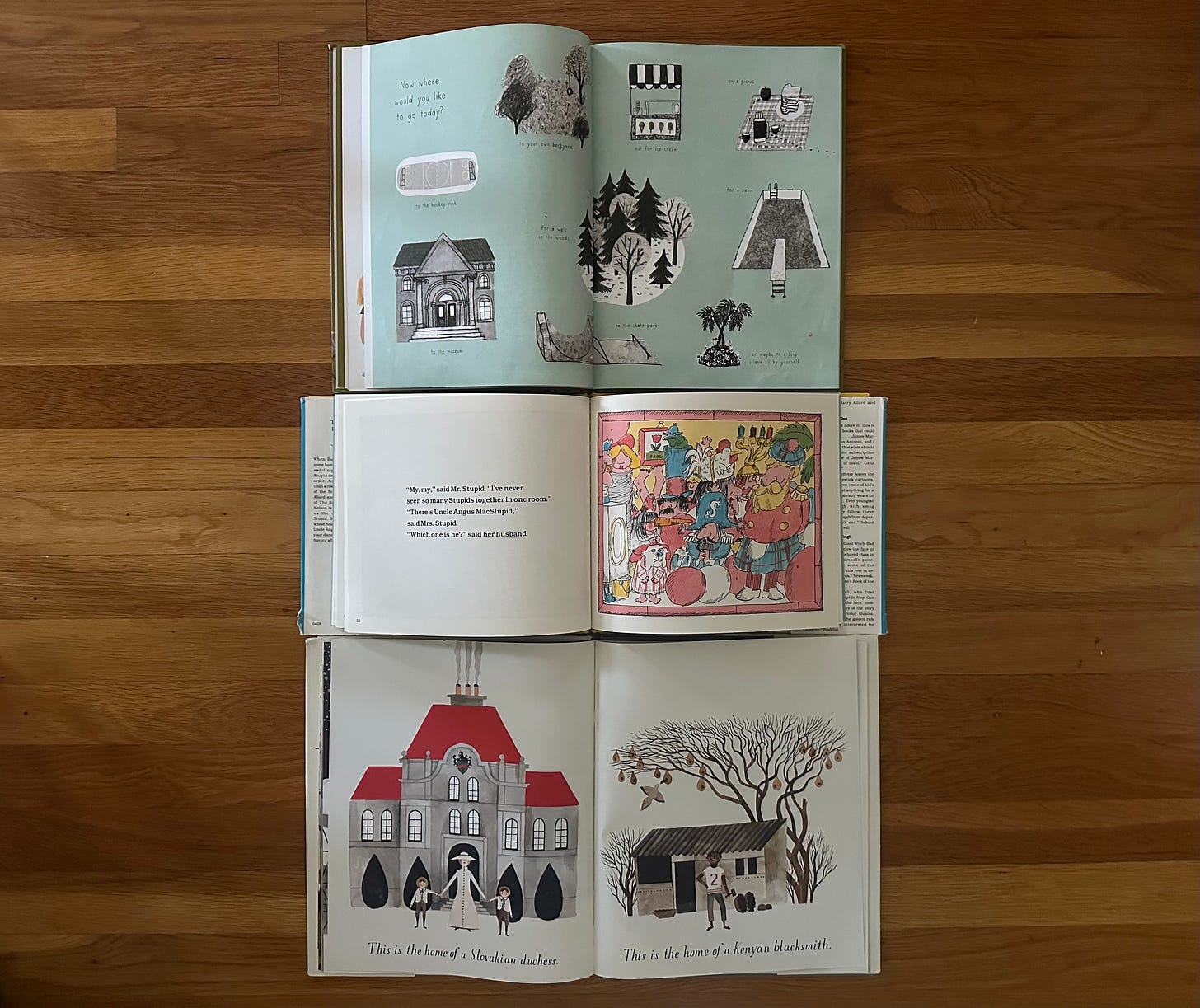


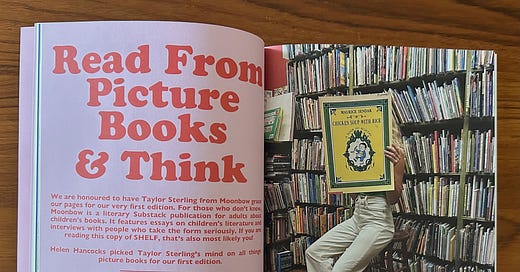


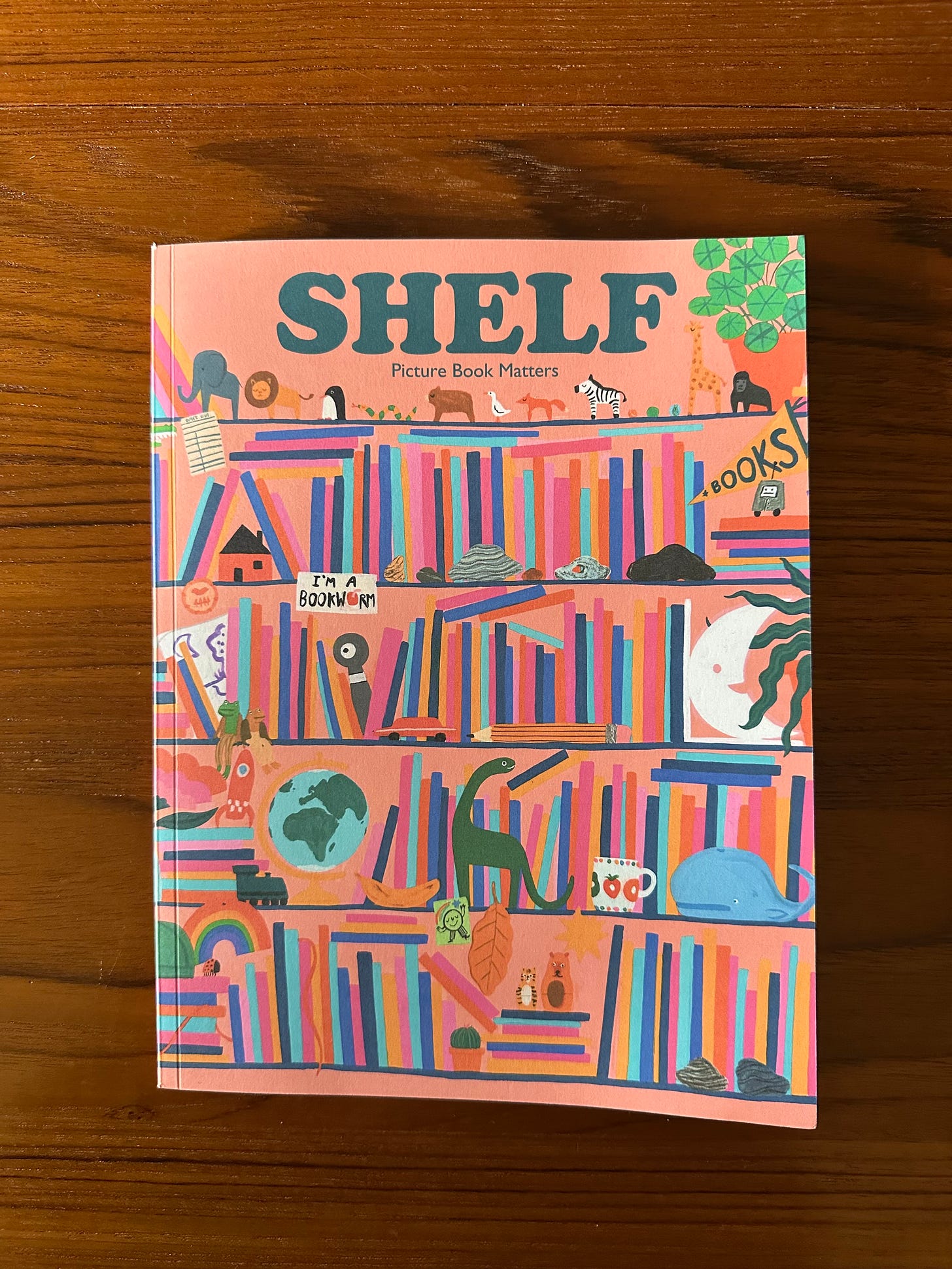

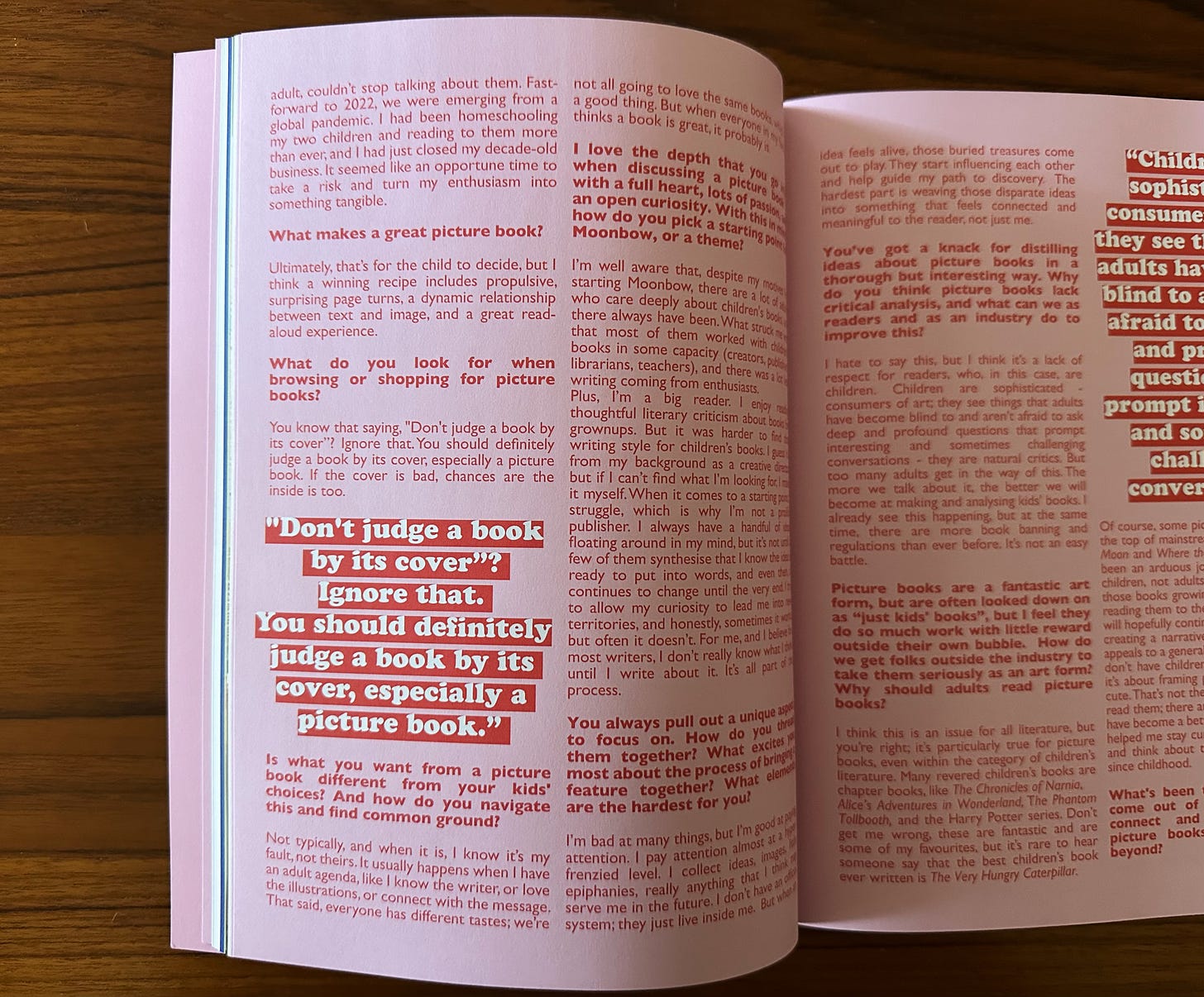
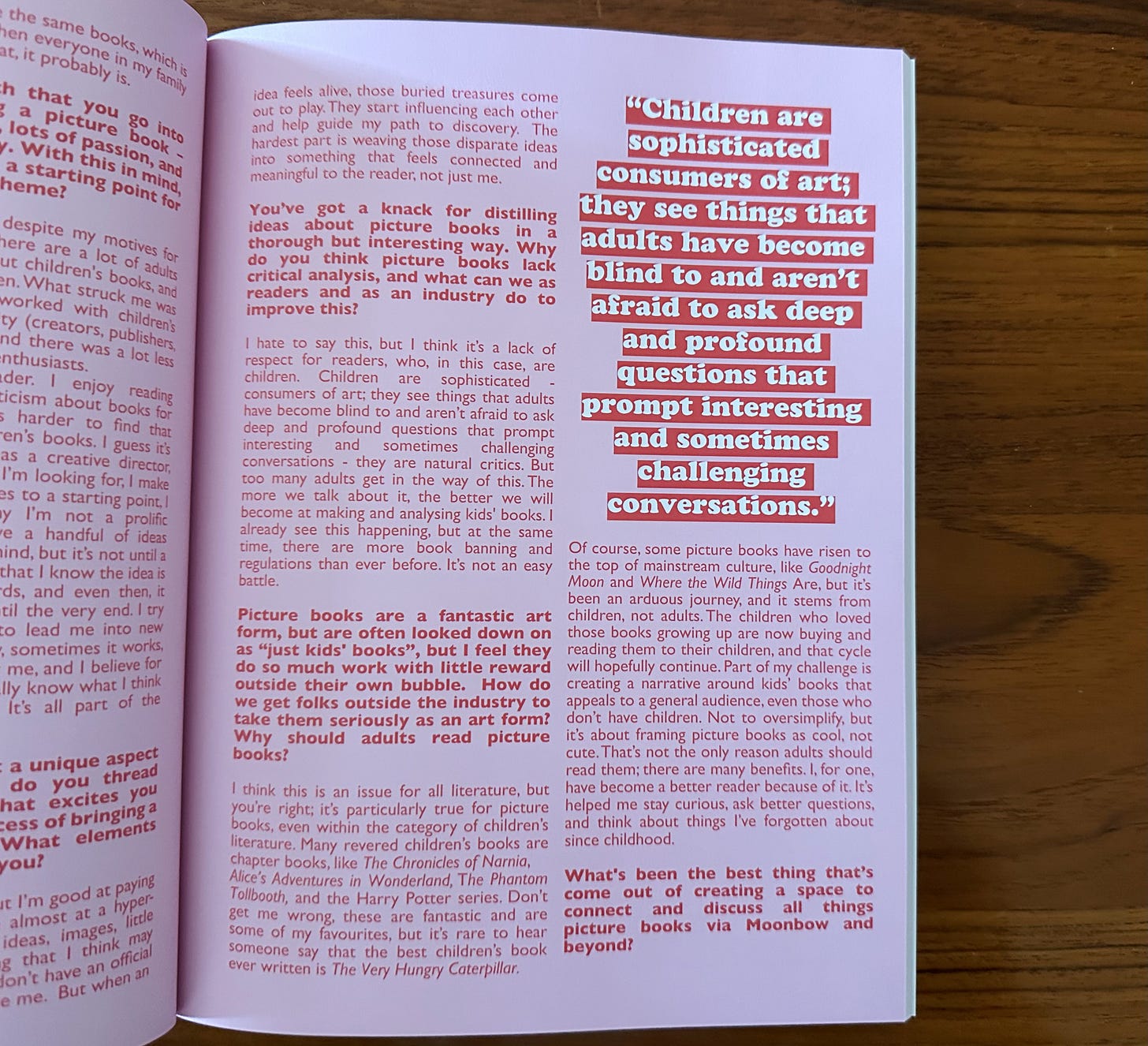
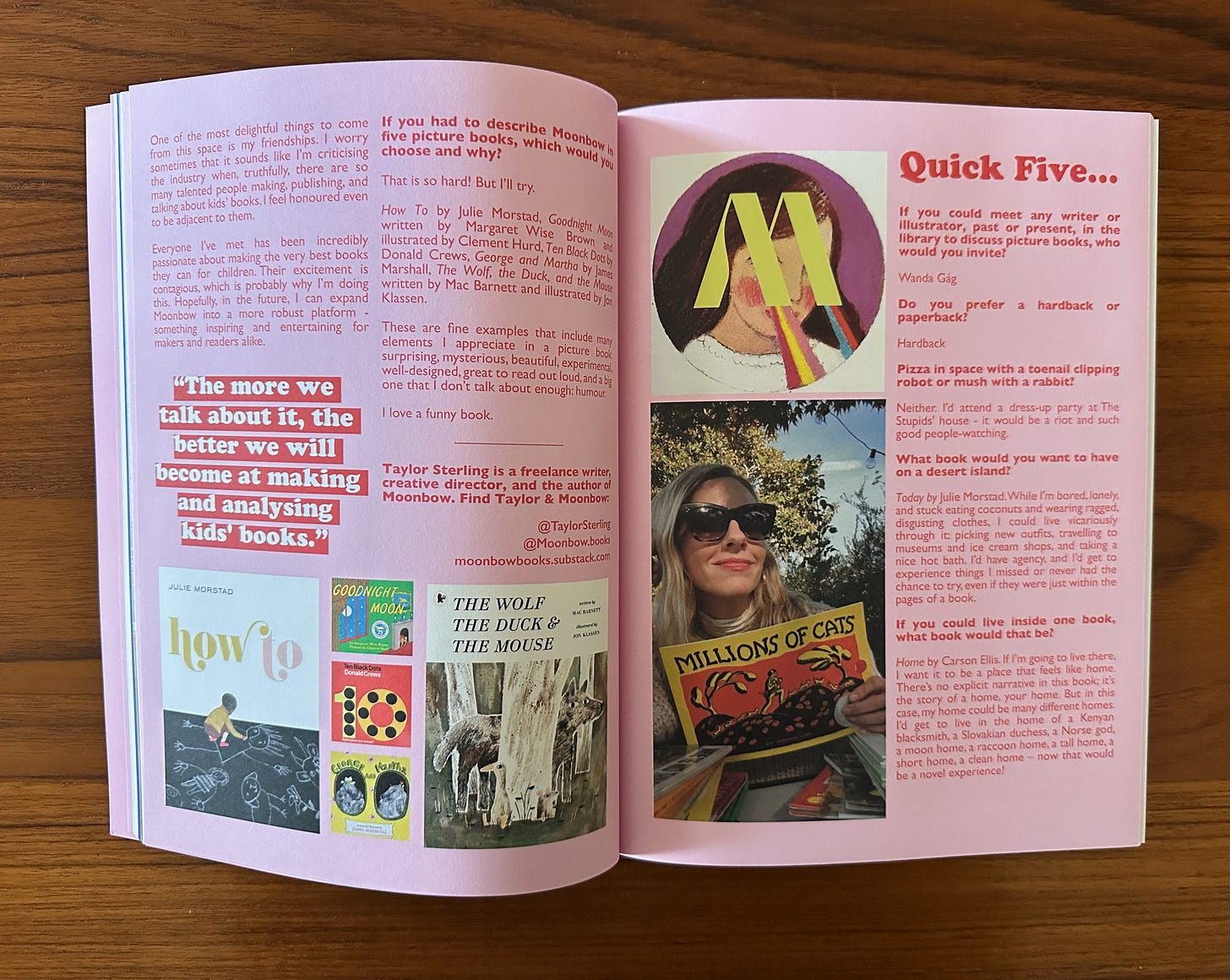
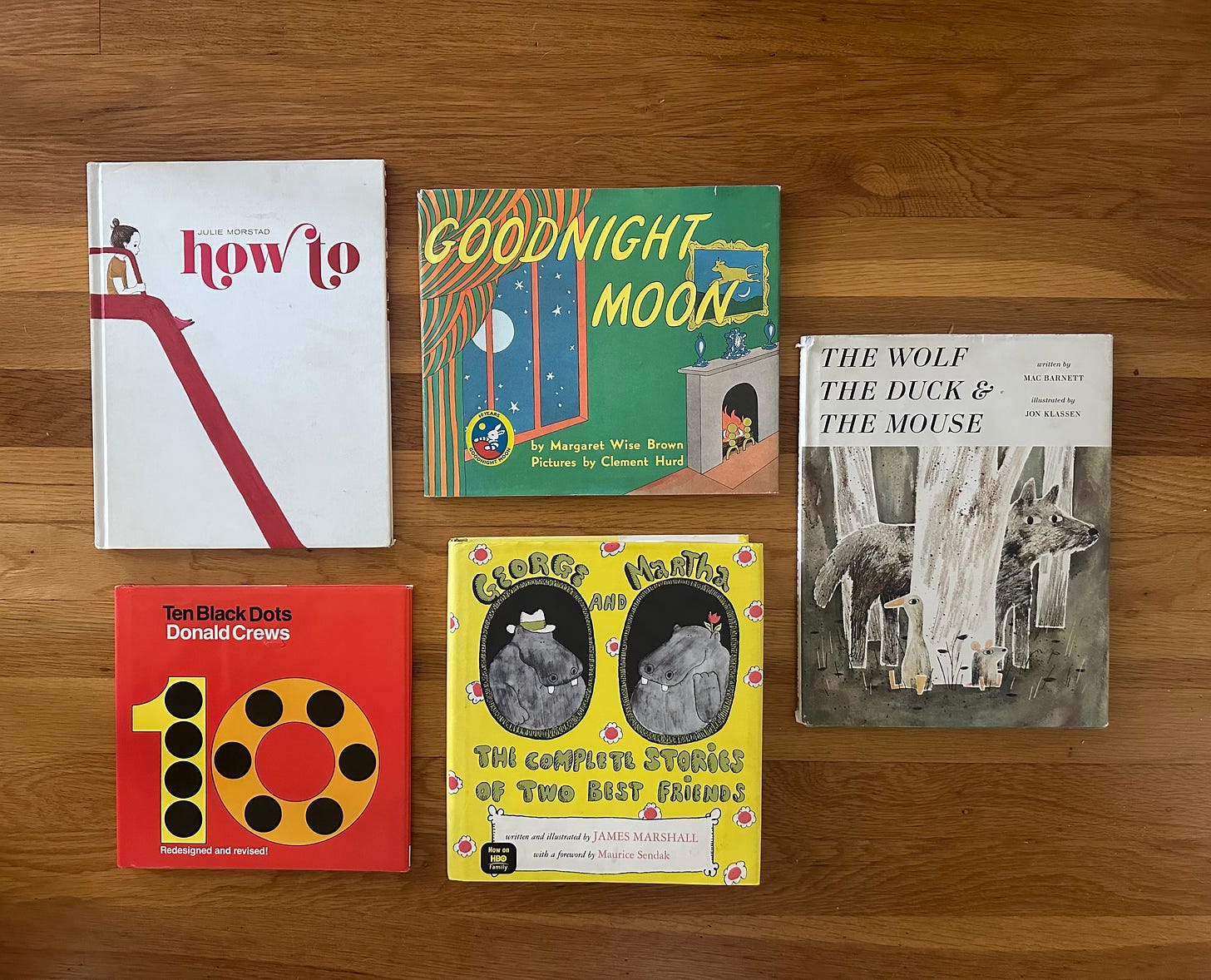
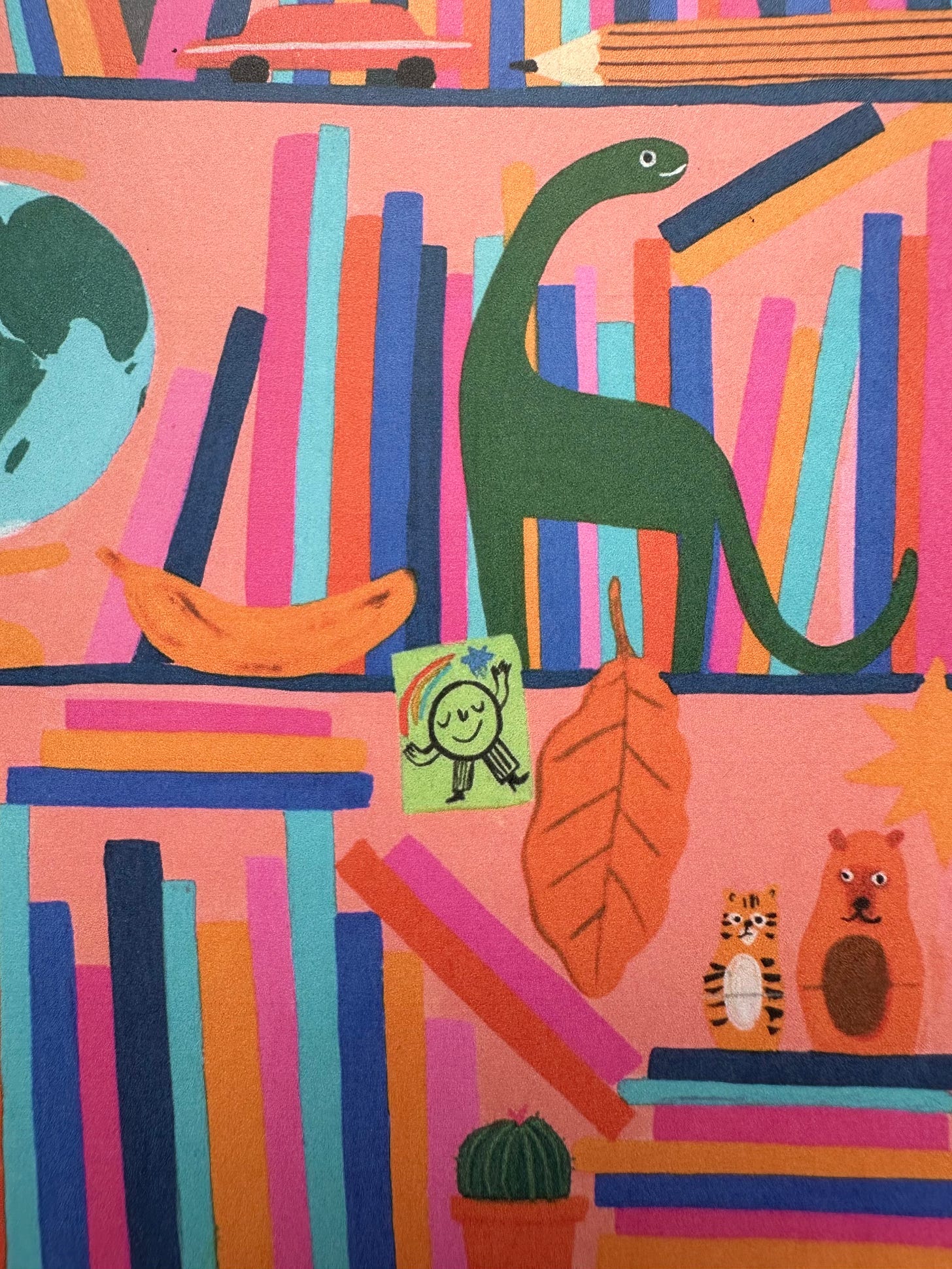
Love this from beginning to end. It’s fun to hear *you* answer the questions ☺️ And of course, you did a lovely job. Congrats on appearing in such a cool magazine!
Today would 100% be my deserted island book.